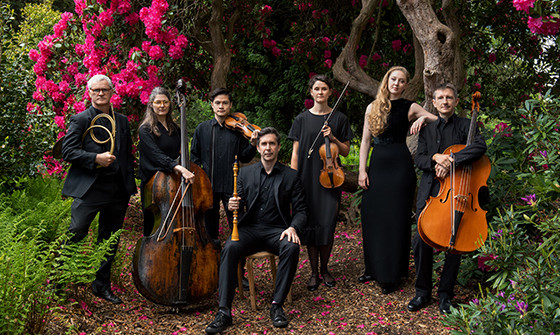“Mozart in Basingstoke“
Orchestra of the Age of Enlightenment
Kati Debretzeni, Luise Buchberger
The Anvil, Basingstoke. 20 May 2023

CPE Bach Symphony in F
Mozart Symphony no 34
JC Bach Sinfonia concertante for violin and cello
CPE Bach Symphony in B minor
Mozart Music from Don Giovanni
Gluck Dance of the Furies
A short tour of related programmes saw the Orchestra of the Age of Enlightenment visit Birmingham Town Hall, London’s Queen Elizabeth Hall, and Basingstoke’s Anvil. Alongside the Mozart Symphony No 34, the CPE Bach Symphony in F, and the JC Bach Sinfonia concertante for violin and cello, common to all three, the Basingstoke concert added CPE Bach’s Symphony in B minor, extracts from Mozart’s Don Giovanni and Gluck’s Dance of the Furies. Travel was the key to the choice of composers – they all left their hometowns to develop their own musical language. They also contributed in various ways to the musical developments during the extended transition into the classical era.
Bach’s most musically successful sons were his second son Carl Philip Emanual Bach (1714-1788), and his 11th son (and 18th child), Johann Christoph Bach (1735-1782). CPE Bach followed the more traditional role for a German musician, working in conventional positions in the court of Frederick the Great in Berlin and as the Kapellmeister (the city’s director of music) in Hamburg. JC Bach was more adventurous, spending time in Italy before settling in London where he ran the fashionable Bach/Abel subscription concerts in the Hanover Square Rooms. He was also a major influence on the young Mozart, who he first met when Mozart was just 8 years old, teaching him composition for several months. Mozart always acknowledged the influence of the ‘London Bach’
Mozart’s travellers are well documented, but the one that probably meant the most to him was the move from Vienna to Salzburg in 1780. Symphony No 34 was one of the pieces that he took with him, and it became one of his first big hits, establishing him as a composer to be reckoned with.
This was an adventurous programme, even by OAE’s standards, and it was a tricky one to negotiate. Putting any composer up against Mozart is always problematical, but the contrasting styles and moods of the Bach step-brothers made it particularly so. The evening started with CPE Bach’s Symphony in F (Wq 183/3), composed in the same year as Mozart’s 34th Symphony. It is a powerful example of the Sturm und Drang (Storm and Stress) genre with its use of dramatic pauses and powerful dynamic changes, combined with the slightly earlier empfindsamer Stil (sensitive style). The Mozart Symphony followed before the interval. So far, so good.
The programming difficulties became apparent in the second half. This opened with JC Bach’s Sinfonia Concertante in B-flat major (W C46), one of two composed for violin & cello. Until the 1990s it was thought to have been lost. It seems to have been composed for on the Bach/Abel concerts during the 1770s. It is a jovial piece of no great musical merit – as the violinist/director Kati Debretzeni opined during the pre-concert talk, it is “music that does no harm”. Its rather well-behaved mood seems to reflect London’s musical tastes of the time, rather than pan-European musical trends. Kati Debretzeni and cellist Luise Buchberger played beautifully.
This was followed by an earlier CPE Bach Symphony (in B minor, Wq 182/5) dating from 1773 and using strings only. Lacking the harmonic interest of Emanuel’s later Symphonies (and all of Mozart’s) it displayed the Sturm und Drang of the Symphony in F but without the dramatic tension of that opening piece.
The final section of the concert was a curious affair, apparently the result of complications in staffing the three concert series. Drawing on their current residency at Glyndebourne, from where they had presumably all just travelled on a day off, they gave a sequence of extracts from x with soprano Mary Bevan and baritone Dominic Sedgwick giving a well-acted and well-sing sequence of moments between Zerlina, Masetto and Giovanni, concluding with Gluck’s Dance of the Furies to represent Giovanni’s fiery introduction to Hell. This went down very well with the audience, although its relevance to the rest of the programme was harder to grasp.
Kati Debretzeni directed the orchestra from her position as principal violin and leader, keeping the players together very impressively. I have often felt that the OAE are at their best when supporting their own, and Kati Debretzeni and Luise Buchberger were two such.
